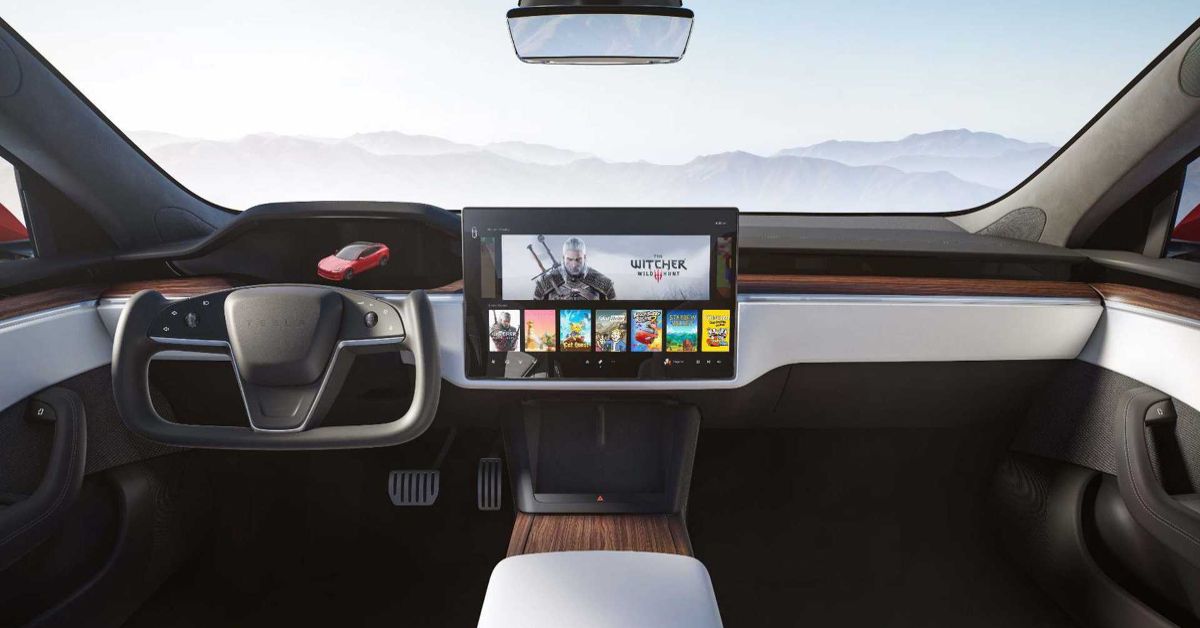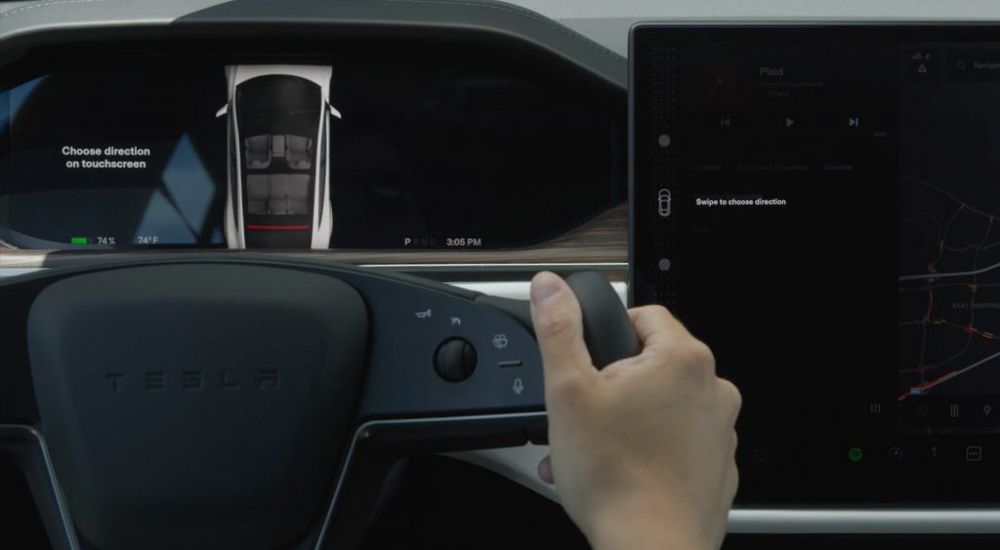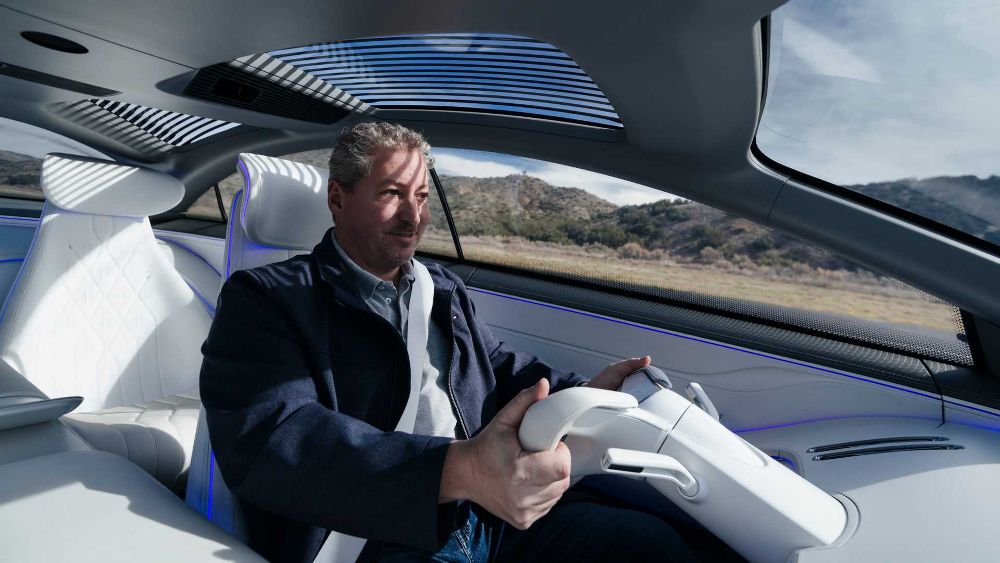Tesla’s long-awaited Model S update was always going to be controversial. It’s just the way the “Mighty Little Company” rolls. The warning signs first appeared in late 2019 when an engineering-spec Model S Plaid reportedly lapped the Nurburgring’s Nordschleife in a time of just 7 minutes and 13 seconds. A full 29 seconds faster than the Porsche Taycan.
But that was two years ago, and no one outside of the factory had any idea that the “Plaid” performance of the car would not be the most discussed feature at the launch of the updated Model S. Not even the 0 to 60mph time of under 2 seconds, has generated as much discussion as has Tesla’s ditching of the 134-year-old Human Machine Interface (HMI), known as the steering wheel.
Tesla not only replaced the steering wheel with a ‘yoke’ design, but it also got rid of all of the stalks on the steering column.
Although the yoke was always expected to go into production, everyone anticipated a rollout only after it had been given a third-party safety stamp of approval. So, seeing it fitted to early production models destined for customers, came as a surprise to many.
The rationale behind the move? Telsa CEO, Elon Musk shared his thoughts on the matter during the launch when he commented: “I think, generally, all input is an error.” And with the NHTSA apparently still considering their options, Musk and Tesla might have chosen to deliver the Model S Plaid without a steering wheel to see how the authorities will react.
These Countries Will Allow Tesla’s Model S Plaid On Public Roads Without A Steering Wheel
The steering yoke is definitely a paradigm shift in basic HMI. Without stalks, the driver can no longer engage gear-selector or turn-signal controls, instead having to rely on touch buttons, which raises concerns over confusion and overall safety.
What is more, the shape of the yoke seems better suited to an F1 racecar or a light aircraft that only need a limited steering rotation.
According to Teslarati, the NHTSA has not yet decided whether the new yoke design meets the Federal Motor Vehicle Safety Standards, although the organization has said that it would work with Tesla on determining whether the steering system is safe.
The agency, however, made it clear that current FMVSS standards do not outlaw what the federal government calls “non-circular steering controls.” Instead, manufacturers are given the responsibility to certify compliance and ensure that all vehicles meet the relevant safety standards.
This somewhat ambiguous stance is puzzling, seeing as other countries where Teslas are sold seem to be very clear on the yoke’s compliance with safety regulations.
The UK Department for Transport that oversees all agencies and policy decisions involving vehicles and road safety has given the yoke the nod, saying: “The regulations relating to steering equipment (UN-ECE Regulation 79) does not stipulate any shape or size of the steering wheel.”
The DfT guidance on MOT inspections even outlines the testing of various steering systems, including yokes and handlebars. Based on the agency’s guidelines, a steering system would pass as long as the design will not result in accidents. In short, as long as Tesla can demonstrate that the new Model S Plaid’s steering yoke is safe, it would be completely legal for use on UK roads.
Similarly, the Netherlands’ “Rijksdienst voor het Wegverkeer” (RDW), which is responsible for vehicle licensing in the country, told a local news agency that it believes Tesla’s new steering system on the Model S is completely legal. The agency also referring to the UN-ECE Regulation 79.
While the new yoke steering might comply with the letter of the law, concerns over its functional safety in everyday traffic situations remain.
Driving A Tesla Model S Plaid On Public Roads Without A Steering Wheel Is No Fun
While the Plaid’s yoke steering is unusual, Tesla is by no means the first company to explore the system’s potential. Several autonomous self-driving concepts have proposed retracting yoke steering systems to free up cabin space.
Mercedes-Benz even gave a group of journalists the opportunity to drive its Vision EQS Concept equipped with yoke steering.
For the event, Mercedes rented an airfield restricting journalists to a few runs up and down the airstrip. Obviously for good reason.
According to Tom Moloughney from Insideevs, driving in a straight line was fine, but turning around at the end of the run was extremely difficult and stressful. The problem stemming from the shape of the yoke. The first few degrees of rotation are fine, but as the angle increases, it becomes impossible to keep your grip on the yoke without crossing your arms. At this point, you have to release the wheel with one hand and grab another part of the yoke to continue.
Needless to say, during an emergency maneuver requiring a sudden and significant change of direction, this could have disastrous consequences.
When asked for comment, IIHS spokesperson Joe Young said that the IIHS “doesn’t have any relevant research on a yoke-style steering wheel,” and thus couldn’t offer an opinion on the safety implications.
This is why Tesla is delivering Model S Plaids without a steering wheel to selected early adopters. They, unlike the general public, are probably going to be less vocal about the yoke’s shortcomings, which could ease the regulators’ cumulative conscience, when granting Tesla permission to do away with the steering wheel.



